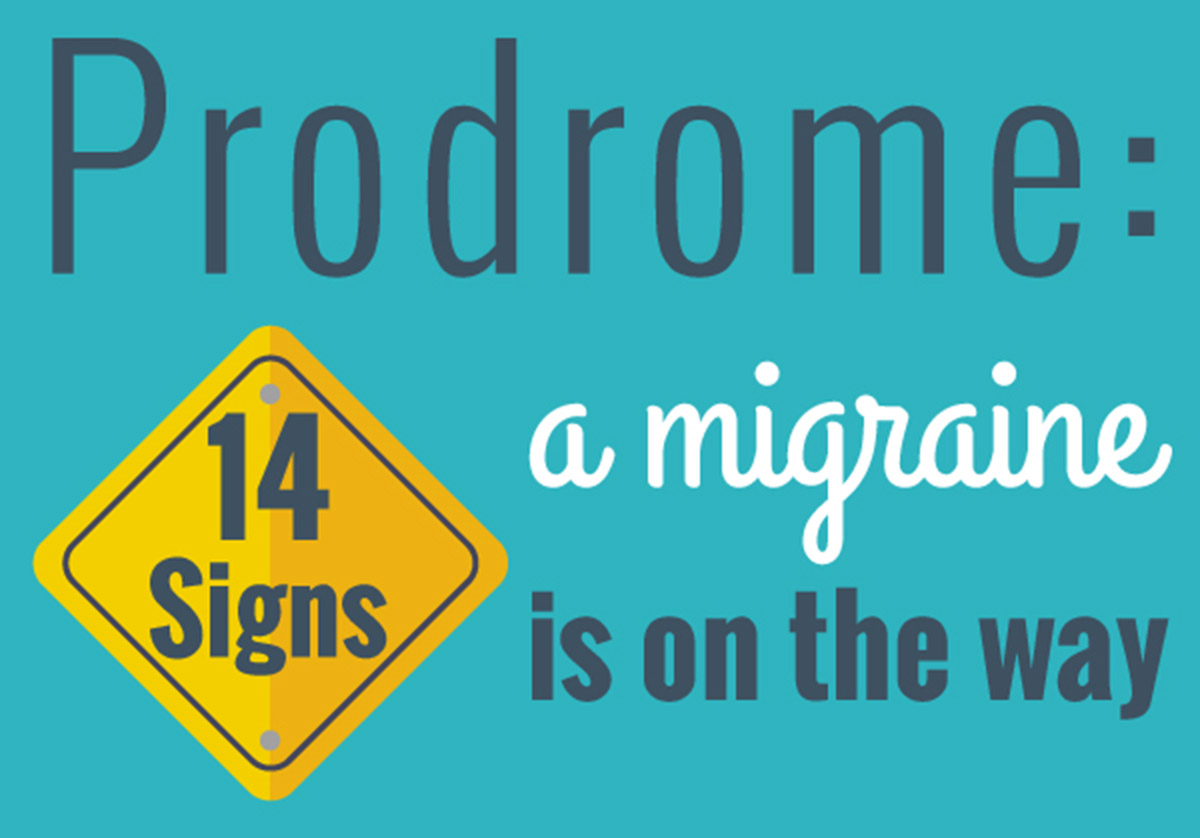Table of Contents
Symptom 7: Sensitivity to sound
If you frequently want to wear earphones, or crawl away and cover your ears with pillows, you may be suffering with phonophobia (sensitivity to sound). Phonophobia is one of the longer-lasting symptoms that frequently starts with prodrome and continues through the aura and attack phase.
Symptom 8: Light sensitivity
Photophobia (sensitivity to light) is one of the most common symptoms. As with phonophobia, the symptom generally continues throughout the attack. Light makes migraines more painful and may cause sensitivity in migraineurs even between attacks.

Symptom 9: Thirst
Needing to drink a lot more before a migraine is a lesser-acknowledged migraine symptom. People rarely spot it, especially if they have other medical conditions (such as diabetes), or take medications that may cause a dry mouth.
Symptom 10: Yawning
If you're yawning so much that people have asked, "Am I boring you?", it could be a lesser-noticed sign of prodrome. It's quite common, although we rarely notice we're doing it. It is thought that it may be due to changes in dopamine levels. However, further research is needed.
Symptom 11: Insomnia
Migraineurs are a bit stuck. Insomnia, or not getting rest, can act as a trigger for your migraine. It is also a symptom of prodrome and the migraine itself, with many sufferers experiencing insomnia or broken sleep until the attack has passed. This insomnia can continue to worsen the attack. And thus the cycle continues.
Symptom 12: Stiff neck
If you only have a stiff neck before your migraine, it's a symptom of prodrome. If your neck remains stiff after your migraine has passed, see your doctor as it could be a sign of something requiring treatment.
Symptom 13: Nausea
Did you know that nausea can begin in the prodrome phase, up to two days before your migraine? If you're feeling sick without other migraine symptoms, you may not be in the migraine phase.
Symptom 14: Food cravings
Many migraineurs have cravings for particular types of food in the prodrome phase: salty, sweet, crisp, carbs, or any mix of the above. While it's fine to indulge your craving, there's no evidence that there's any biological need behind them.
READ Do You Suffer From Migraines? Follow These Tips To Lower Your Risk
But what's this mean?
A 2016 study by Nicola Giffin, published in the journal Neurology, revealed that patients who monitor prodrome symptoms could predict a migraine with a 93% success rate up to 24 hours before the attack phase strikes. As discussed earlier, this could be invaluable for preventing the debilitating pain and other symptoms of migraine.
By working with a neurologist or migraine clinic, chronic migraineurs could find the perfect time to take their abortive medication (when they know a migraine is imminent, but before it has become completely incapacitating) and so prevent migraines from taking hold and devastating the migraineur's life.
Watch your Triggers
We all know that prevention is better than cure. While you're monitoring your prodromes, try seeing if your migraines seem to have any particular triggers.
READ It's Now Possible To Zap Your Migraines Before They Start
Common triggers include:
- Flashing or strobe lights; florescent or harsh lights.
- Strong odours
- High altitude
- Lack of sleep (occasional, or during a prolonged bout of insomnia), or sleeping too much
- High and/or prolonged stress
- Skipping meals (irregular blood sugars are a big cause - you should eat little and often); excessive caffeine or alcohol; consuming red wine (which contains tyramine and has been linked to migraine); large amounts of camembert and brie (tyramine again).
- Additives, particularly: monosodium glutamate (MSG), nitrates and nitrites, Sunset Yellow (also known as Yellow Dye Number 6 and E110) and aspartame.
- Dehydration: Dehydration leads to migraine, so drink 8 glasses of water a day. Also avoid diet drinks with aspartame (see above).
- Looking at screens for hours on end. If you work with a screen, take regular breaks to do other tasks, and make sure you sit comfortably with your neck supported (neck strain is thought to contribute to migraine). No-one's saying that - if screen time is a trigger - you have to stay off your computer, but by being sensible and avoiding looking at your computer from breakfast until dinner (perhaps instituting a self-curfew), you can get everything that you need done, and may reduce your number of migraines.
- migraine.com/blog/what-is-a-migraine-prodrome/
- www.migrainetrust.org/about-migraine/trigger-factors/common-triggers/
- www.ncbi.nlm.nih.gov/pmc/articles/PMC4955275/
- www.health.harvard.edu/blog/food-and-migraine-a-personal-connection-201104052222
- www.healthcentral.com/migraine/c/123/141662/migraine-prodrome/
- www.healingwell.com/library/migraines/mcelhinney5.asp
- www.healthline.com/health/migraine/migraines-and-diarrhea
- www.nhs.uk/conditions/aphasia/Pages/Introduction.aspx
- www.neurology.org/content/65/4/E9.full
- www.healthcentral.com/migraine/cf/slideshows/migraine-prodrome-symptoms
- www.webmd.com/migraines-headaches/guide/migraine-phases#1
- Infographic by SteadyHealth.com

